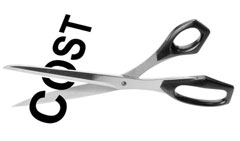| |
|
| |
|
 |
Supply
Chain by the Numbers |
| |
|
| |
- June 28, 2019 -
|
| |
|
| |
|
| |
|
| |
Robots to Replace Moderate Level of Manufacturing Jobs; Is Economy Falling into Recession? A Successful Test of an Autonomous Truck; Nestle Supply Chain Savings |
| |
|
| |
| |
| |
| |
20 Million |
|
That how many jobs are expected to be lost in manufacturing over the next decade due to robotics. That according to a new study from Oxford Economics, a global forecasting and quantitative analysis firm. That may sound like a lot, but consider a few things. First, that jobs loss is a global number, spreading out the impact. Second, that 20 million represents only 8.5% of all manufacturing jobs globally. And third, some number of those lost jobs will be replaced by other jobs created by the robot technology. At this point, every new robot that is installed displaces 1.6 manufacturing workers on average, according to the Oxford Economics model. And did you know the automotive industry used 43% of the robots deployed in manufacturing worldwide in 2016? But robots are becoming cheaper than many human workers, in part because of the falling costs of machines. The average unit price per robot has dropped 11% between 2011 and 2016, according to Oxford Economics. And they are increasingly capable of functioning in more sophisticated processes and varied contexts. |
|
|
| |
| |
|
|
|
That's how many miles a fully autonomous trucks from truck technology startup Starsky Robotics successfully navigated on stretch of the Florida turnpike June 16. The Class 8 Volvo sleeper berth tractor-trailer traveled at 55 mph on the highway, in full traffic. It successfully merged onto the highway, entered a rest area and changed lanes. The operation was closely watched by the company from a remote location to ensure all maneuvers were executed properly. San Francisco-based Starksky has been pushing its technology forward at a rapid pace. On Feb. 16 and 17 the company took a Class 8 Freightliner tractor and set it up with sensor and camera technology to run on a closed road in Hendry County, Fla. The two days of trial runs were closely monitored by a "remote driver" from an office roughly 80 miles away. The company's CEO says remote driver support will be needed for a long while for "contextually complex junctures." |
| |
| |
|
| |
| |
65% |
 |
That is how much of its aggressive cost cuts in procurement the world's world's largest food company, Nestle, has achieved versus it 2016 goals when the cost cutting program was announced. That according to an update from the company this week. The goal was to o generate savings of 2.0 billion to 2.5 billion Swiss Francs ($1.99 billion to $2.49 billion) by the end of 2020. While the procurement operations have already generated 65% of planned savings, manufacturing so far only has managed 35%, the company said. Nestlé is currently closing one plant a month, the company said. It also is repurposing some of its facilities, and transferring manufacturing functions between plants.
The cost cuts have had a measurable effect on the company's financial results, improving its margins, capital expenditures and working capital, according to Nestle's CFO. Capital expenditures as a percentage of sales fell to 4.2% last year from 5.9% in 2012, according to a recent investor presentation. Working capital, measured as a percentage of sales, declined to 1.4% from 8.5% in 2012, according to the presentation. Return on invested capital has increased to 12.1% from 10.8% in 2014
|
| |
| |
| |
| |
| |
|
|
|
| |
 |
 |
| |
|
|
| |